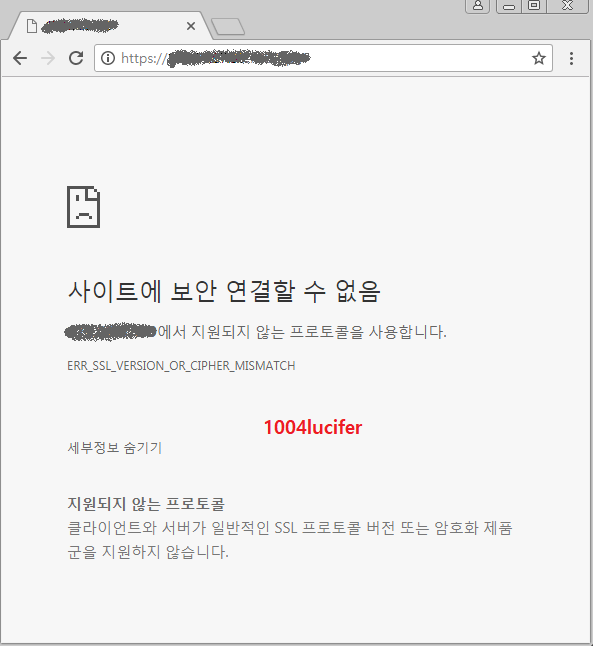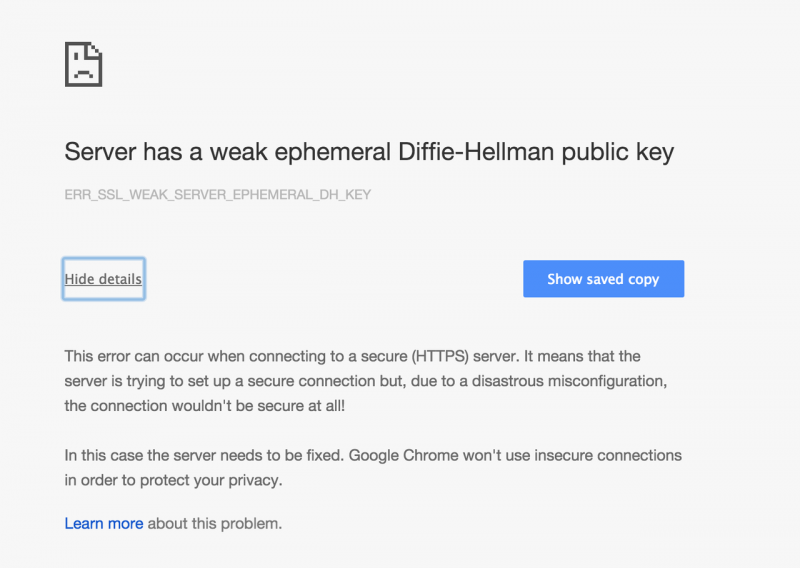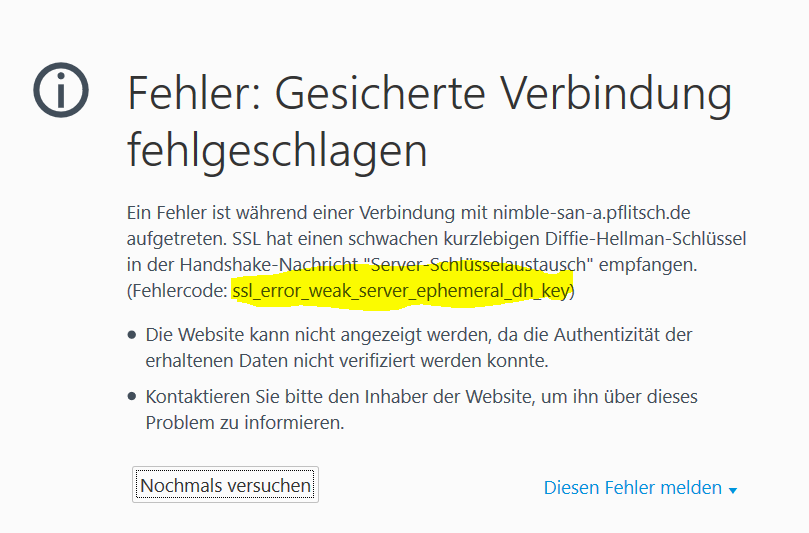Another potential fix worth noting: In your about:config, your user profile may have some settings that have been corrupted. One in particular that was noted here: security.tls.version.max. In particular, the discussion at the linked site points out that somehow the security.tls.version.max setting had been changed from its original value (3) to the new value of 1, and after that change, the. In this tutorial, we will teach you how to fixed SSL ERROR WEAK SERVER EPHEMERAL DH KEYIf you found this video valuable, give it a like.If you know someone w.
 Mozilla Firefox is one of the most used browsers, like Google Chrome. If you’re among those who rely on Firefox for most of their internet activity, then there’s a chance you might have faced some techie error messages while trying to visit a website. Some are common ones, and some are unheard and quite difficult to resolve. Among the pool of these errors, one is ssl_error_weak_server_ephemeral_dh_key.
Mozilla Firefox is one of the most used browsers, like Google Chrome. If you’re among those who rely on Firefox for most of their internet activity, then there’s a chance you might have faced some techie error messages while trying to visit a website. Some are common ones, and some are unheard and quite difficult to resolve. Among the pool of these errors, one is ssl_error_weak_server_ephemeral_dh_key.If you’re facing this issue, then hold back, here we’ll give you a step-by-step guide on how to resolve this Mozilla Firefox error message: ssl_error_weak_server_ephemeral_dh_key. But, before we do that, let’s understand what exactly causes this error message.
What’s Firefox ssl_error_weak_server_ephemeral_dh_key Error Message?
Apart from this, some other reasons due to which users can see this error message are:
- The website you’re visiting is vulnerable to specific online attacks.
- If the server is Tomcat and there’s no other secure server certificate.
- Some websites likely keep their servers secured, and to access it, the secured server certificate is required.
Ssl_error_weak_server_ephemeral_dh_key Mozilla Firefox
A Step-by-step Guide to Fix Error ssl_error_weak_server_ephemeral_dh_key on Mozilla Firefox
Before we jump into the solutions, let’s do some of the basic checks to know whether it resolves the issue or not.Sometimes it happens that this error is due to the old drivers into your browser. So, first, check and try to update with the latest ones, it may solve the issue. To update the driver,
- Press Ctrl+Shit+A or
- Click on Open Menu
- And, go to Add-ons

In your Mozilla Firefox menu, (Three Lines at Top Right Side), click “Help Menu.”

 using this solution you need to open the hidden Firefox config menu and have to set the security.tls.insecure_fallback_hosts strings to the domain that’s displayed in error. For doing so, follow the below steps:
using this solution you need to open the hidden Firefox config menu and have to set the security.tls.insecure_fallback_hosts strings to the domain that’s displayed in error. For doing so, follow the below steps:Go to your Mozilla Firefox browser and in the address bar type: “about:config”.
Proceed with Caution page will appear over there click on the checkbox “Warn me when I attempt to access these preferences” and then click “Accept the Risk and Continue” button, like below:
 on it, the blank Text box will open, in that type the domain name which is showing that error message and then click on the right icon next to it.
on it, the blank Text box will open, in that type the domain name which is showing that error message and then click on the right icon next to it.Now, restart your Firefox browser and verify whether the website is opening or still shows the same error message, if the error message is still persisting, then move to the next step.
It’s suggested to follow the below steps on every installation of Mozilla Firefox, which experience the issue.Firefox Ssl_error_weak_server_ephemeral_dh_key
Like the above step, again open the hidden config menu of the Mozilla Firefox browser.
Now,
1. Copy and paste: “security.ssl3.dhe_rsa_aes_128_sha” and change its preference from true to false.
Tomcat Ssl_error_weak_server_ephemeral_dh_key
ssl_error_weak_server_ephemeral_dh_keySsl_error_weak_server_ephemeral_dh_key
, but again there’s no surety. If you get this error, simply go through this guide and follow the mentioned steps.Though some steps like opening a hidden config menu of the web browser may seem a bit new or techie to you, but no need to worry as trying these mentioned solutions won’t harm or change the settings of your browser.
Other SSL Certificate Errors and Troubleshoot Guide
